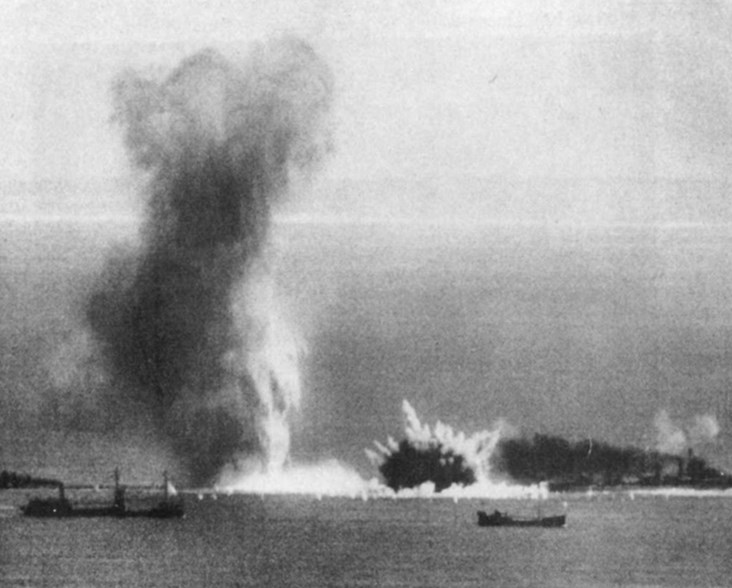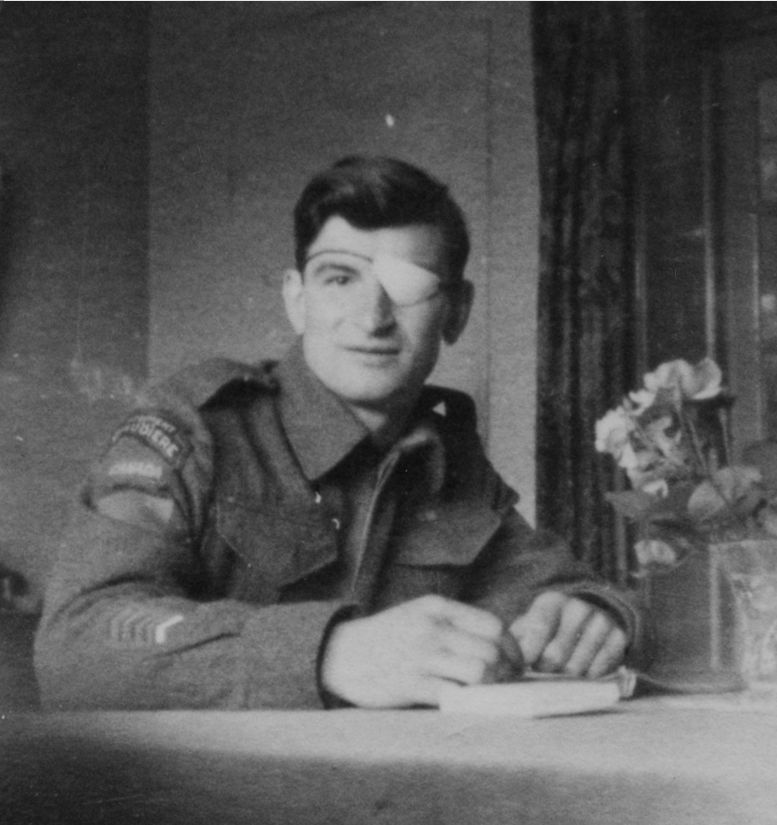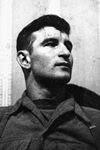Why the Nazis Lost 140 Aircraft in Eight Days
The War Illustrated, Volume 3, No. 47, Page 81, July 26, 1940.
Our Hurricane and Spitfire fighters, with a rate of fire of 9,600 round per minute from their eight machine-guns, are superior to the German fighters, which in fact they almost disregard in attacking the escorted bombers. Moreover, our fighters are more manoeuvrable than those of the enemy.
During the week ending July 13th the Nazis inaugurated massed attacks by daylight on our shipping convoys, in an attempt at blockading our coast. They came over with very large fighter escorts. Thus on July 10th our Spitfires over the South-east coast met a Dornier bomber with an escort of 30 Me. 109s, flying in three layers between 8,000 and 12,000 feet. Two enemy fighters were shot down and two more damaged. Later, Spitfires met several Dorniers heavily protected by fighters.
"It was like a cylinder of circling enemy aircraft," said one of the pilots. He climbed to the top of the "cylinder," did a spiral dive down the inside, attacked a Me.109 and a Dornier bomber, and put them both out. On this day the enemy lost for certain 15 aircraft, and others were badly damaged. We lost two British fighters, one pilot escaping. The conclusion to be drawn from these heavy fighter escorts is plain: so strong are the British defences that only thus closely guarded dare the Nazis send across their bombing aircraft.
There are two main reasons for the fighter superiority so disliked by the enemy. In initiative and daring, in readiness to take on bigger odds, our pilots and crews are far better than their opposite numbers in the Luftwaffe. Then again, our Hurricanes and Spitfires are better fighting machines, armed with eight Browning machine-guns firing forward. A converging fire at a rate of 1,200 rounds each gun per minute can be delivered, brought to bear at a point 250 yards in front of the aircraft. Against this terrific fire-power the German bomber can bring to bear only one at a time of its three movable machine-guns.
The German fighters are armed with one cannon (or shell gun) and four machine-guns, or with two cannon and two machine guns. From actual experience our Royal Air Force has found its own armament of all machine guns to be superior. The German fighters, moreover, are said to less manoeuvrable than our own.
The dauntless spirit of our airmen is exemplified by a story of a fighter pilot who recently shot down a Dornier 17. He had lost both legs in a pre-war crash. Invalided out of the R.A.F., he eventually became so skilful in the use of his metal legs that he resumed his cricket, and could also play tennis and squash. On the outbreak of war he "argued his way" into an R.A.F. Volunteer Reserve Medical Board and insisted he was fit for flying. The President of the Board persuaded the doctor to send to a central flying school for a test. He passed with flying colours and went to a fighter squadron. In a "mild crash" a few months ago both his metal legs were bent, but an artificer put them straight, and within half an hour he was up in the air again. Now he is leading a squadron of Canadians.
Our ground defences have come remarkably well out of the first large-scale raids, which began on June 18. The A.A. gunners have done very accurate work, and besides putting up fierce protective barrages have shot down a dozen or more enemy aircraft during the week under review. As to the convoys, the enemy raids have had negligible effect, and it is doubtful if even the Germans themselves believe that a decisive result can be gained by these attacks.
Now let us take a glance at the figures for the raids. In eight days the enemy lost 90 aircraft and fifty more were so badly punished that it is doubtful if more than a few could have reached home. This was accomplished with the loss of only thirteen of our fighters. During the period from June 18 to July 7 the Nazis lost 37 aircraft. Thus in the last four weeks twice as many German aircraft have been destroyed as during the 9.5 months from the outbreak of war to June 17, when the enemy lost 63 machines in raids on Britain.
While our Royal Air Force has thus put up such a good show in the defence of Britain, its bomber squadrons have ceaselessly carried the war into the enemy’s country. On the night of July 13-14, for example, fourteen enemy aerodromes in Holland and Germany were bombed; other objectives included:
"Docks at Hamburg, Wilhelmshaven and Emden; aircraft factories at Bremen and Deichshausen; oil refineries at Monheim and Hamburg; supply factories at Grevenbroich, Gelsenkirchen and Hamburg; and goods yards at Hamm, Osnabruck and Soest."
All our aircraft returned safely; one bomber on his homeward way even shot down an enemy fighter! On the following night eight other enemy aerodromes and seaplane bases were attacked. No wonder that, faced with this kind of activity night after night, thousands of Germans from the raided regions are said to be fleeing to Czechoslovakia, Poland and other places of safety. All these targets are chosen in relation to the enemy’s probable plans for the invasion of Britain: day by day our forces endeavour to nip in the bud any major operations at marshalling men, material or transport.
Highly significant, too, is the statement by our Air Ministry that the success of the R.A.F. attacks is "contributing effectively to a reduction in striking power of the German Air Force."
Index
Previous article
In Dover's Straits the Nazis Swooped
Towards the close of a beautiful day (July 14) - one so clear that from Kent's shore the white cliffs of France could be clearly seen - a convoy of Allied merchantmen was steaming steadily up Chan
Next article
Items of War Interest from Far and Near
Marshal Pétain has signed orders putting all French ports and river mouths under the authority of the French Navy, specifically mentioning Nantes, Bordeaux and Rouen. The German radio broadcast a






